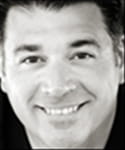
Blogs

Most churches make one of two mistakes when it comes to marketing. Either they fail to market their church or message in any way, or they market them ineffectively....

Why does being offended matter? Read herer about what your offense impacts.

Of books and blogs on leadership, there is no end. Usually detailed within them are concrete, specific tasks or skills needed for an effective leader. This is all well...

A tragic car accident outside a church leads to a powerful message on faith and the urgency of ministry and outreach. This incident highlights the importance of...

Let’s talk about what any individual person in any particular church can do to help their church reach its full redemptive potential. In other words, let’s go after...

The key to a thriving church is how it’s organized. When a church focuses on growth rather than control, leaders can make quick, effective decisions, encouraging...

Here are 12 steps to take when walking through the healing process.

In the late 1930s, Corrie ten Boom was living in a small town in the Netherlands, better known as Holland. Horrified by the German onslaught against the Jewish people...

On the 4th of July, I’m always reminded of times I’ve traveled in countries where freedom is severely curtailed. Or where the people have been freshly freed from the...

Here are 10 things that ANY church – no matter its size or budget, worship style, or denomination – can do to help ensure it will grow numerically.

Jesus was simultaneously the most influential figure in all of human history and the ultimate model of spiritual living. For He “did not come to be served, but to...

Struggling to decipher between what is true and false? Here is the truth about God.

The state of your spirituality does not rest on how you feel, but rather on who you are—and who you are becoming. God is in the soul-making business, and He does...

There’s more of an implicit bias than functional racism at play in our world. So let’s call it a shadow racism that can rear its head in anyone’s life. And because...

We do not live and breathe in a neutral environment, but rather in the midst of a hostile conflict—and we are behind enemy lines. The god of this world has been named,...

In a day when almost every church would say they want to reach the unchurched, why isn’t it happening more often? Why are churches better known for their rhetoric...

Letting go of your children is tough. Here are some simple ways to make letting go a little easier.

As our church gears up for a new class for our Leadership Development Program (100 people for a year-long investment), I am reminded how seldom the actual practice of...











